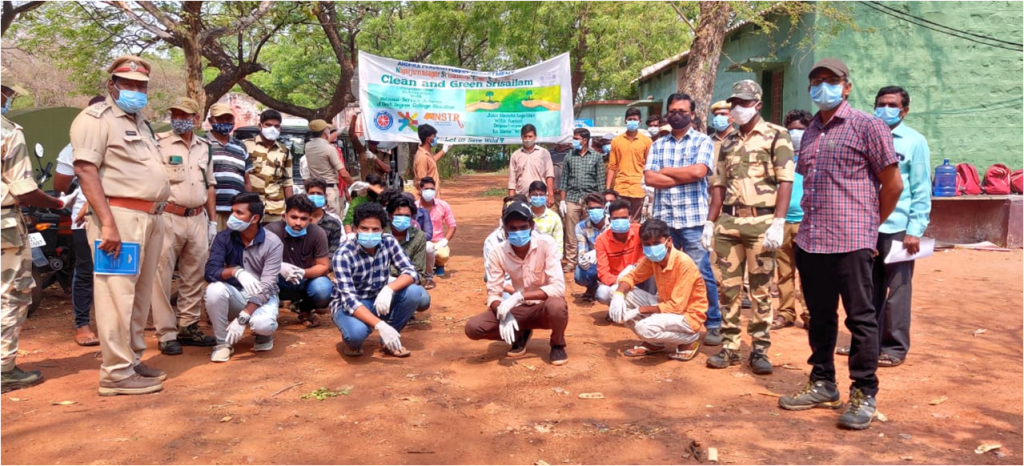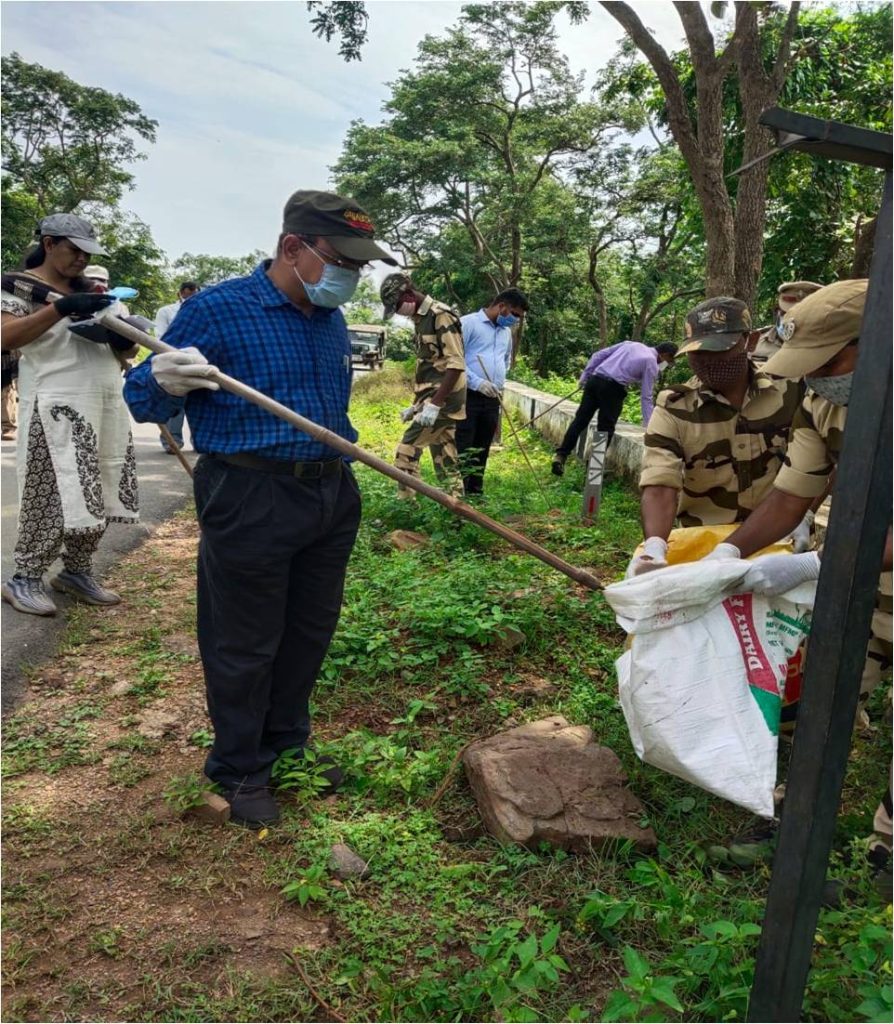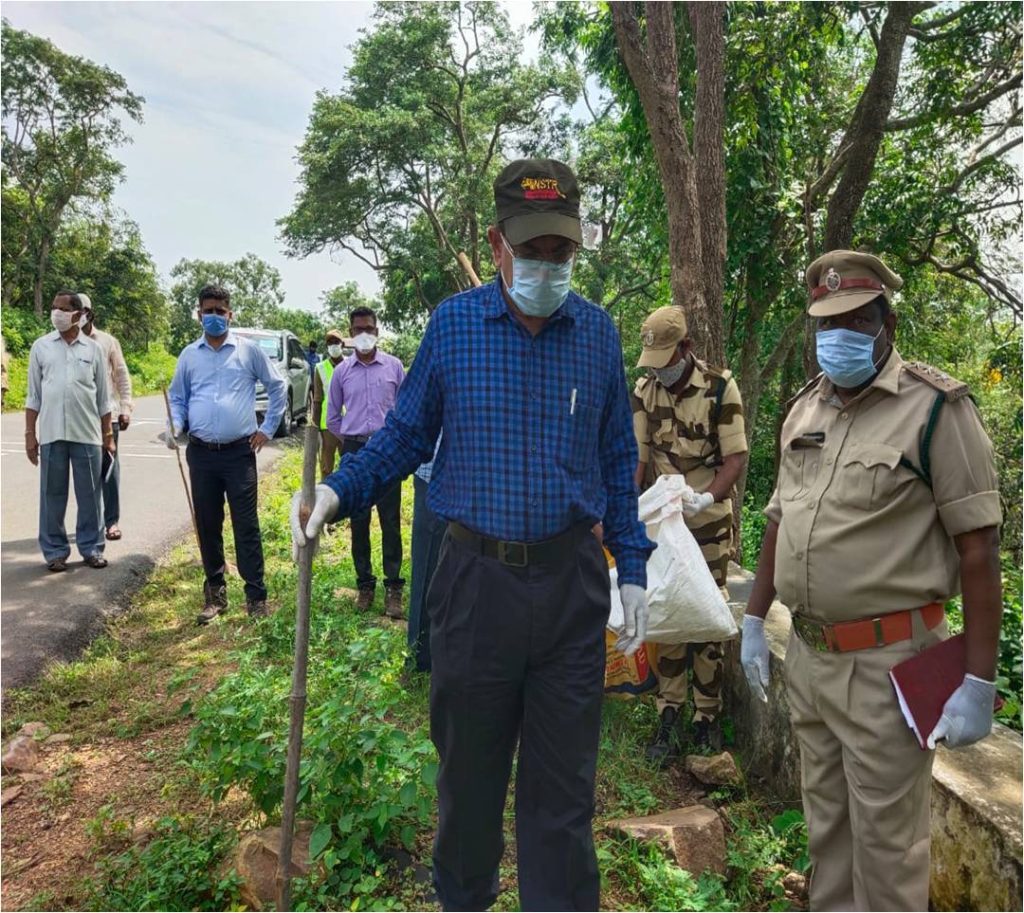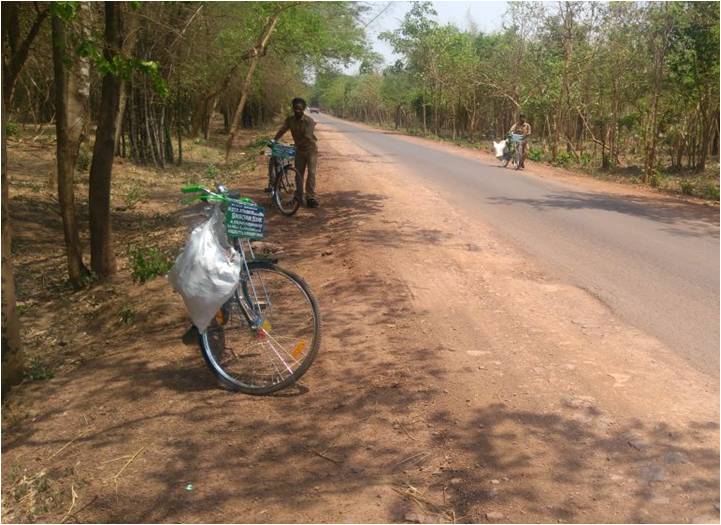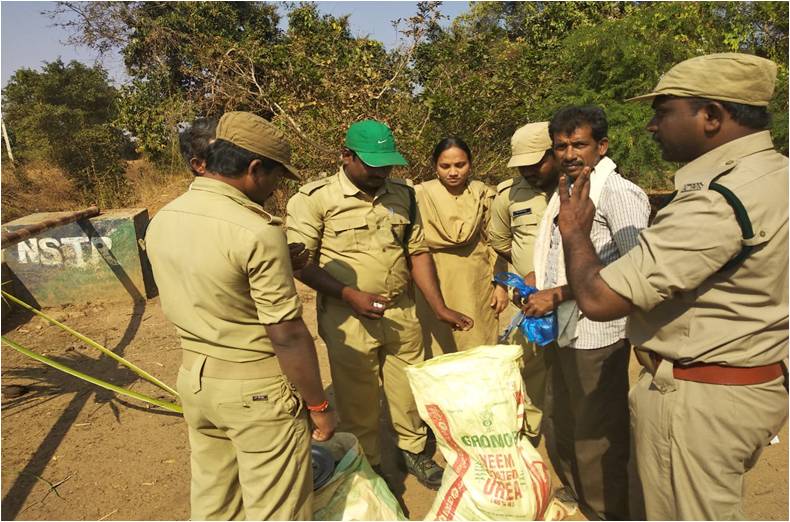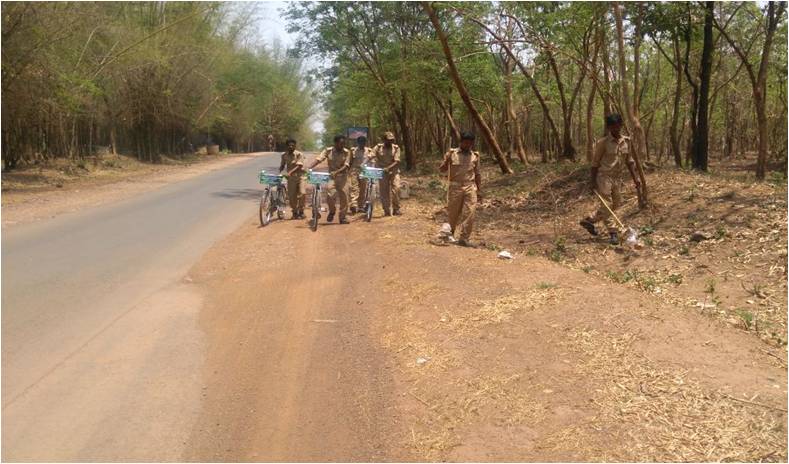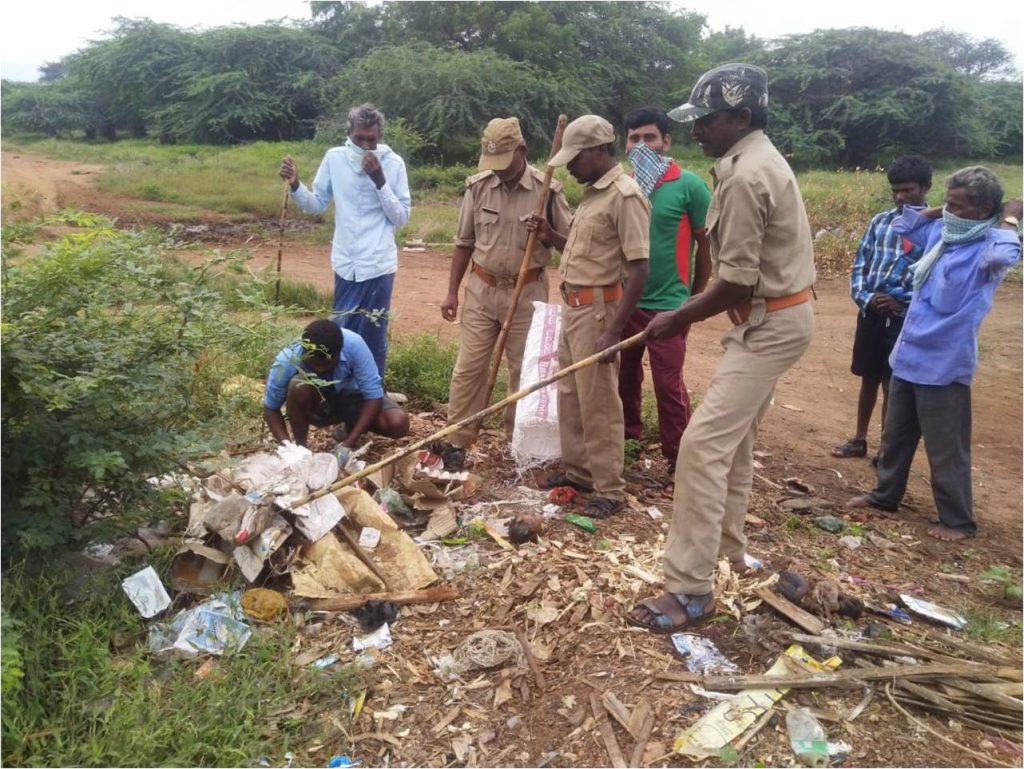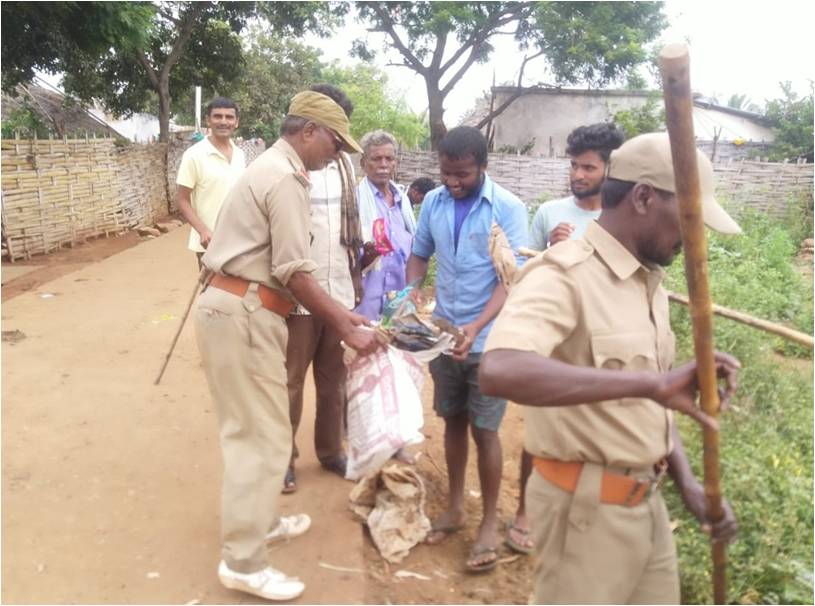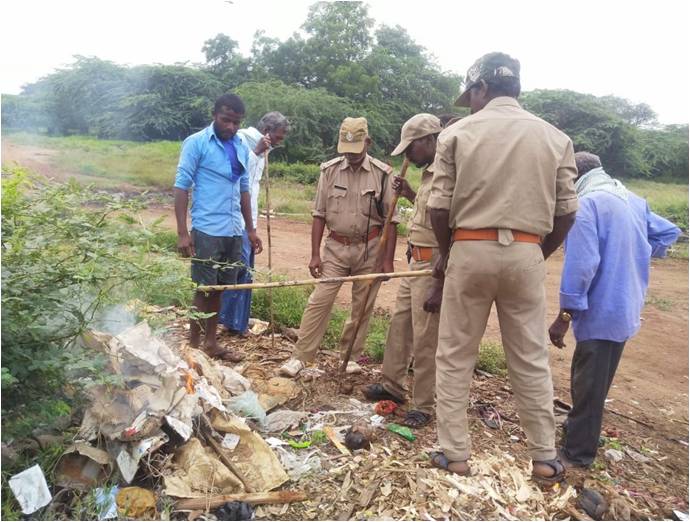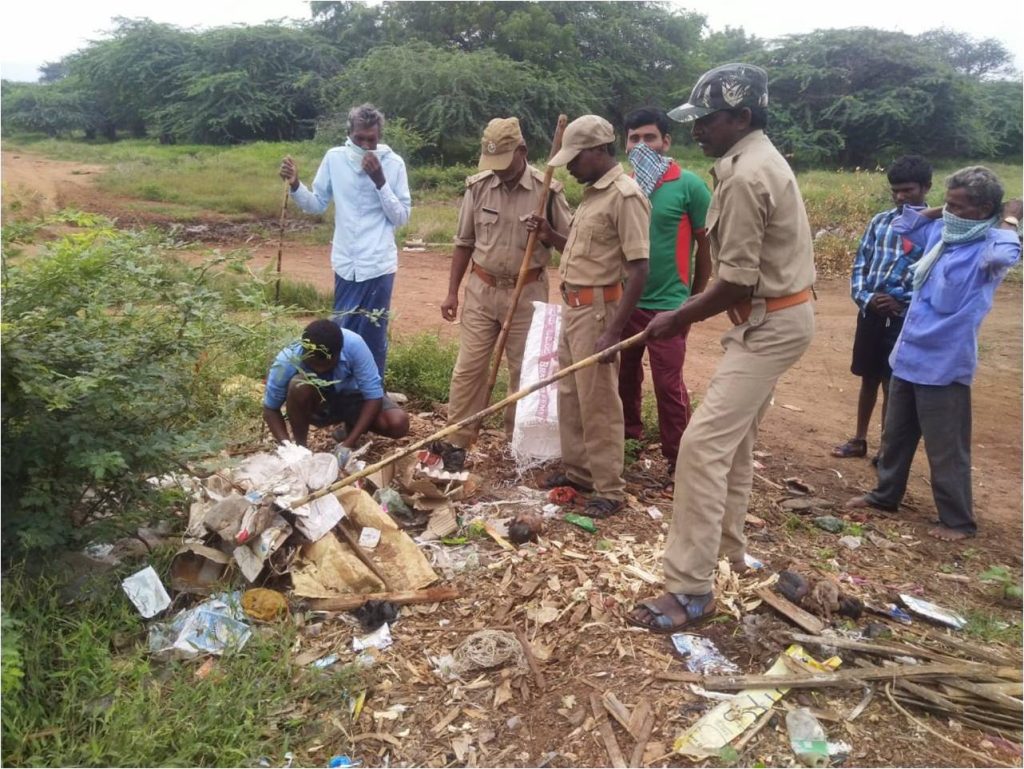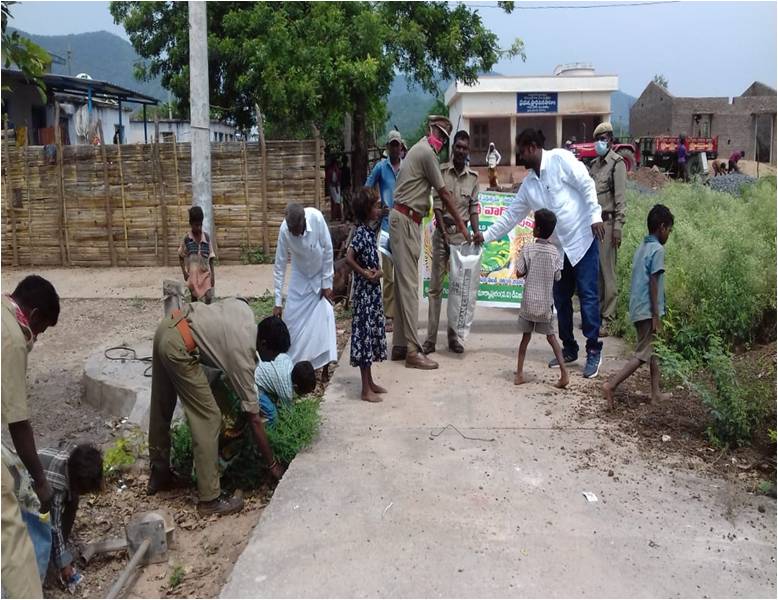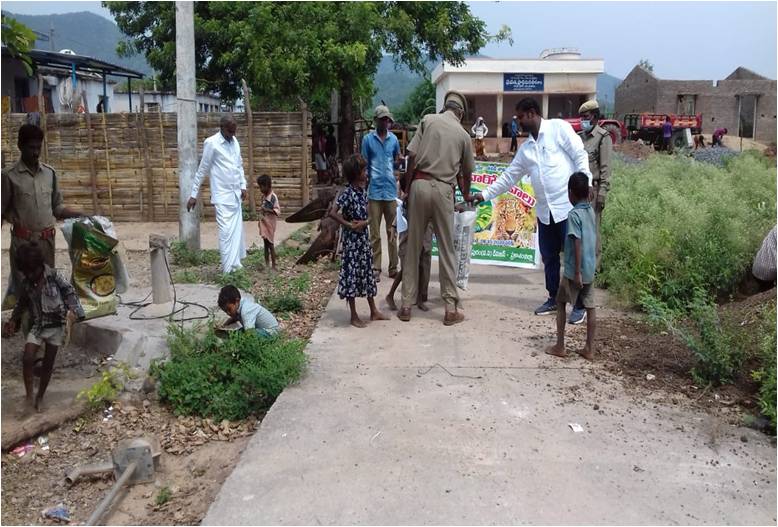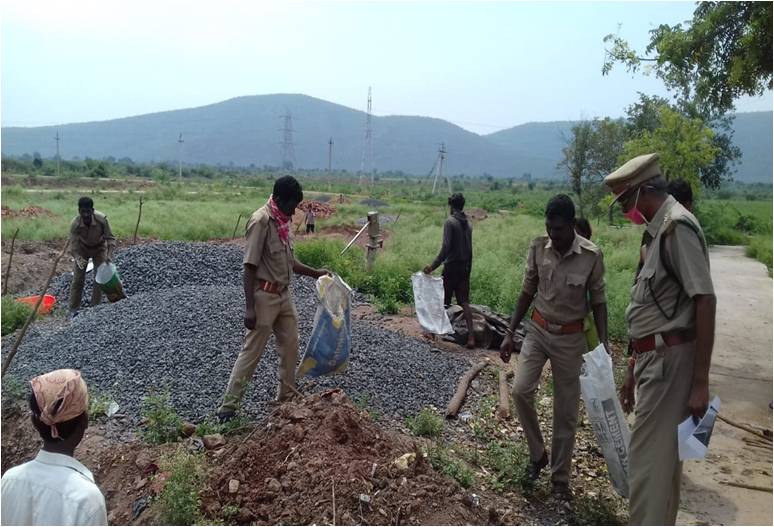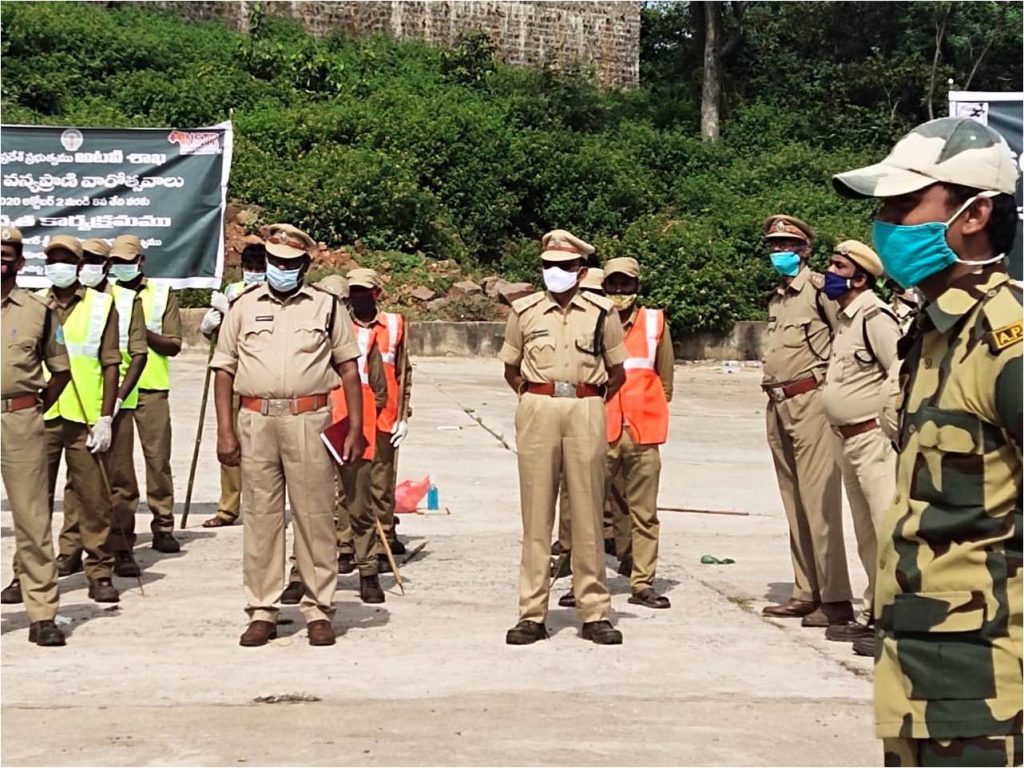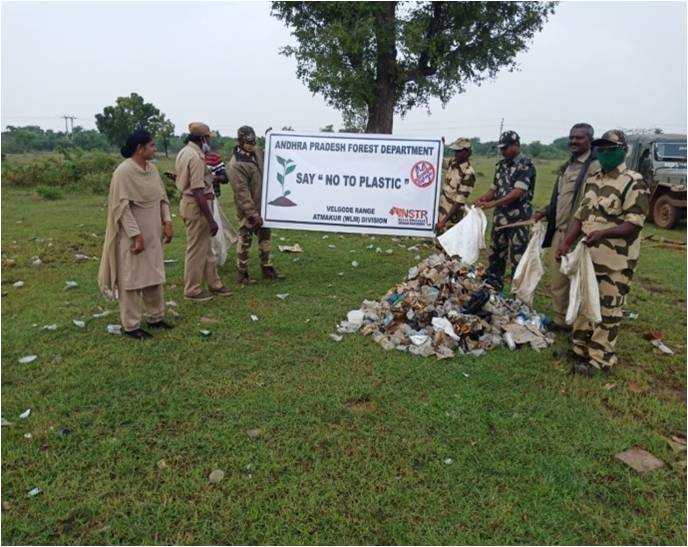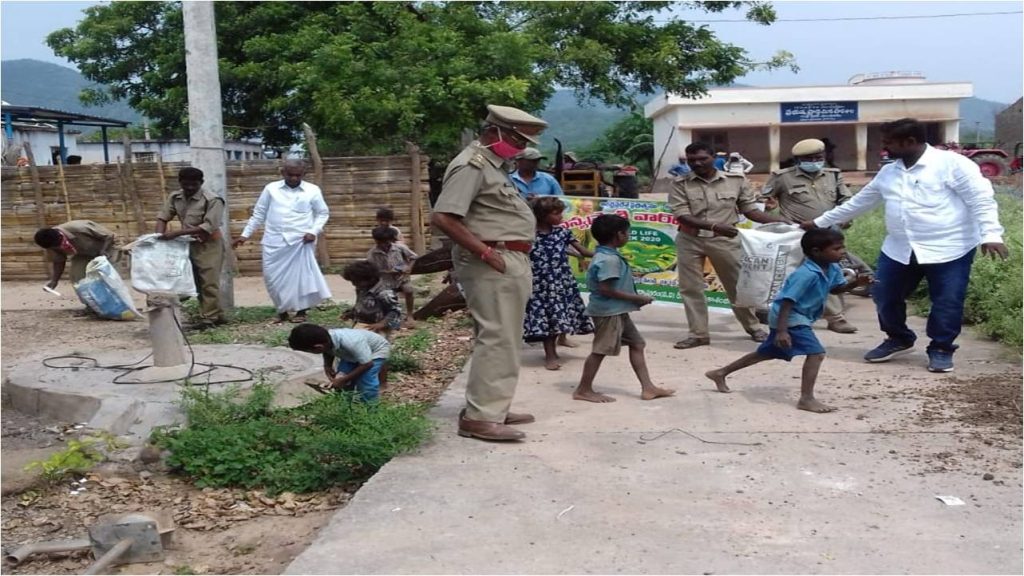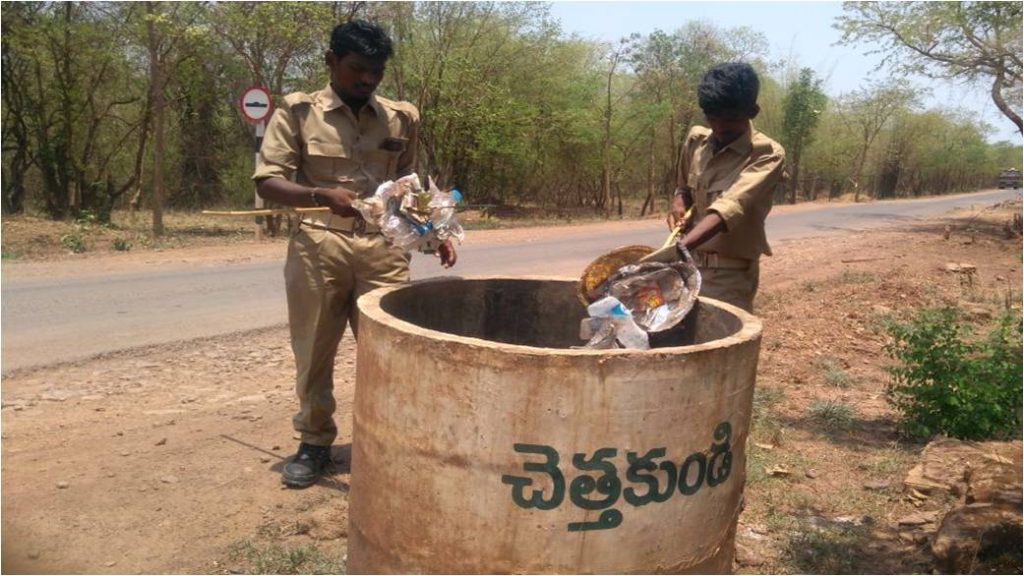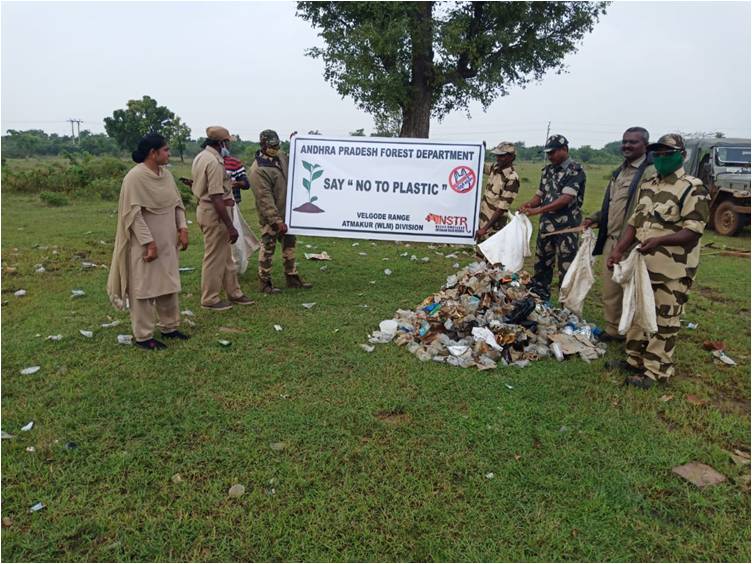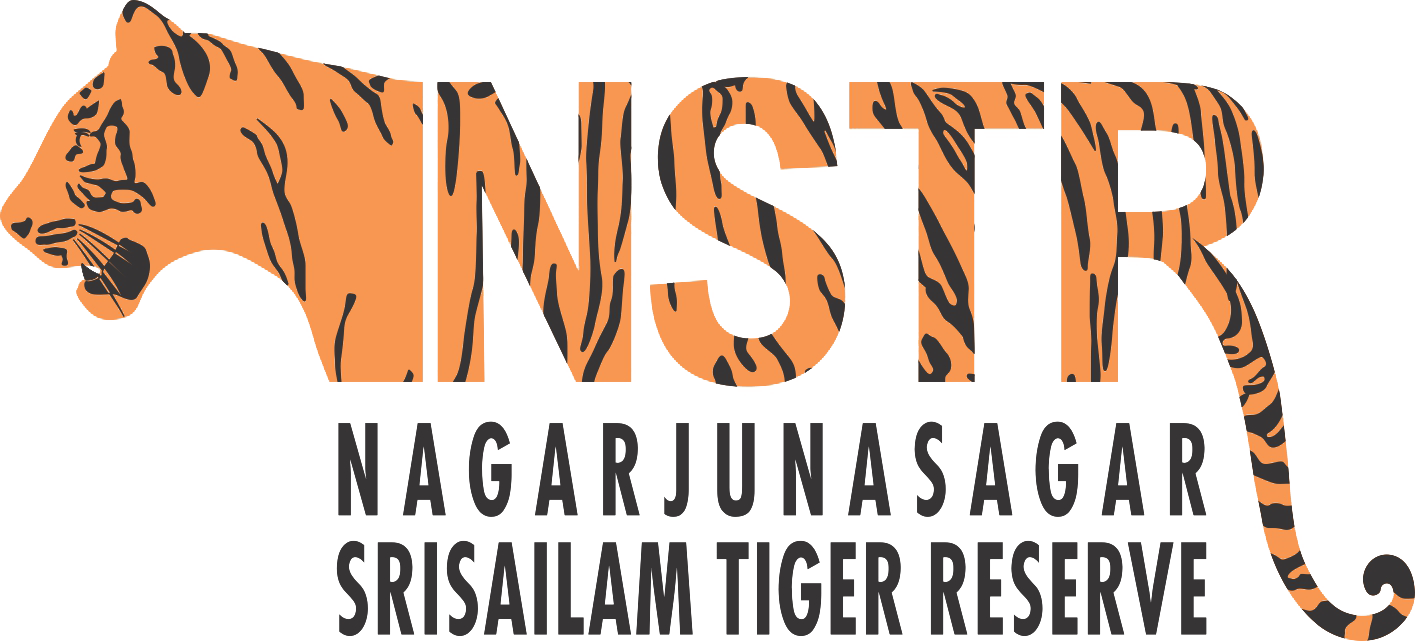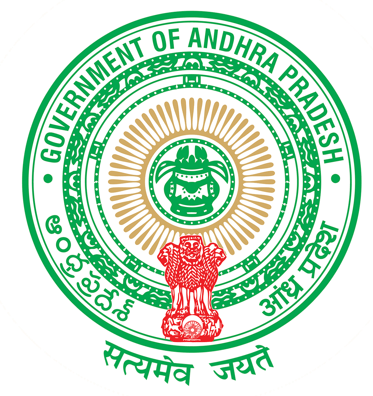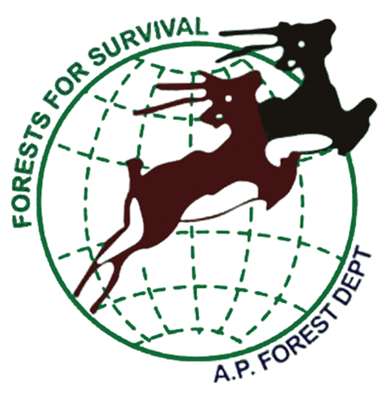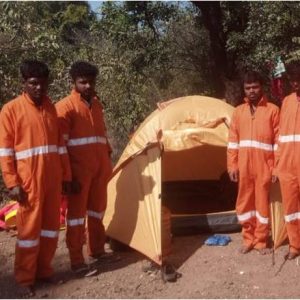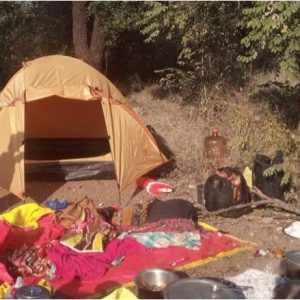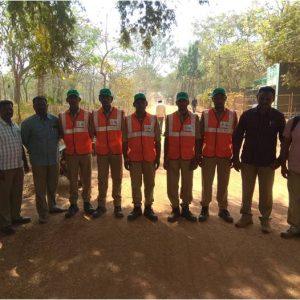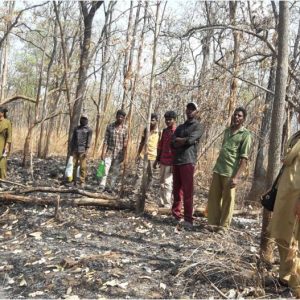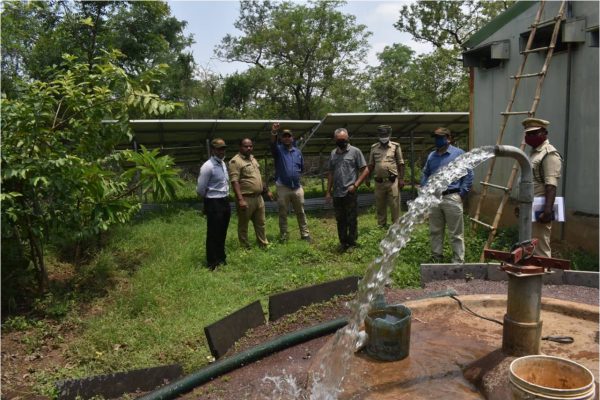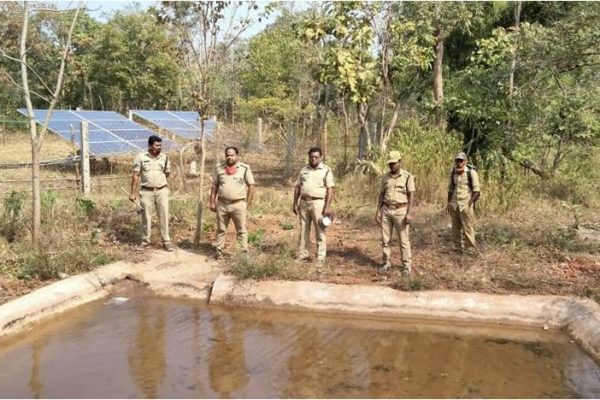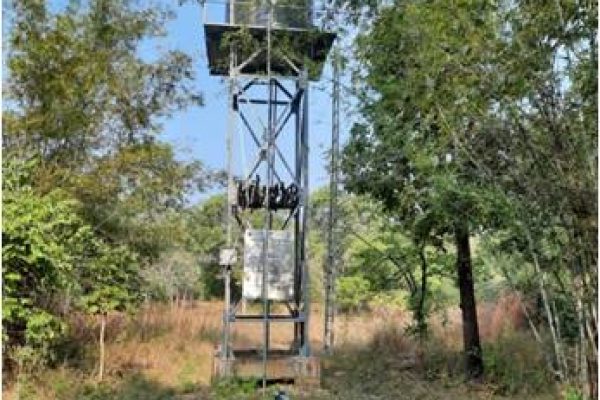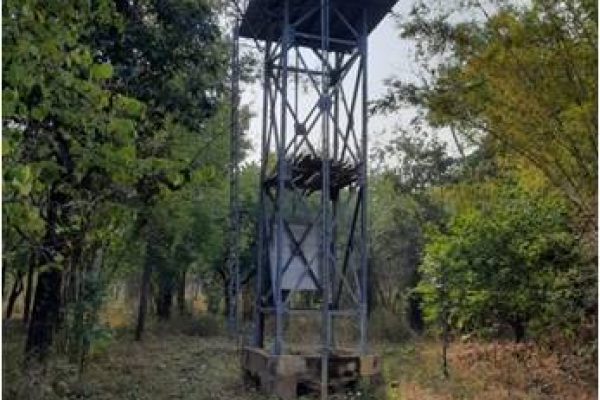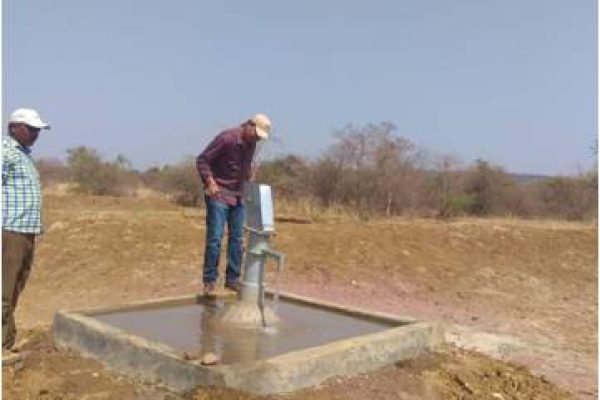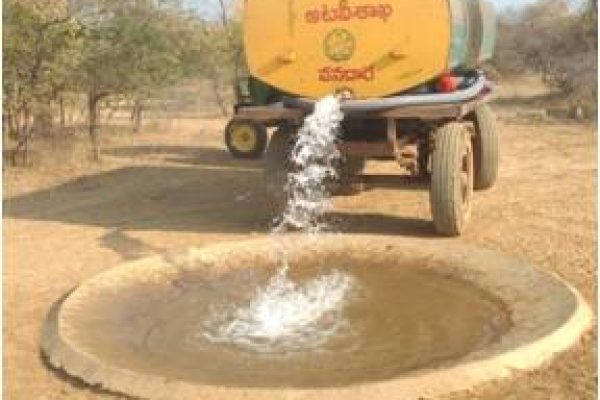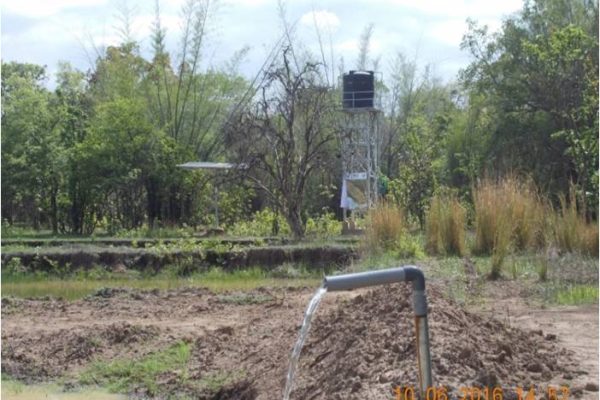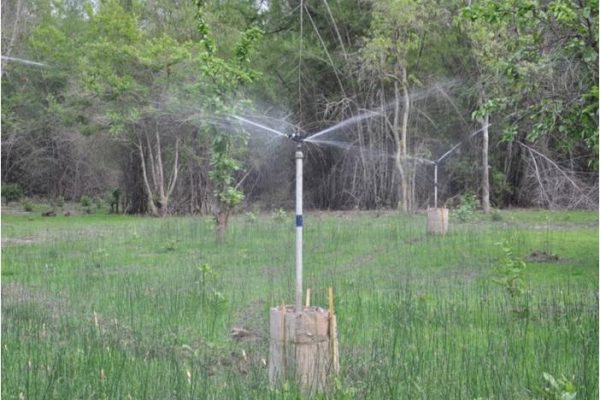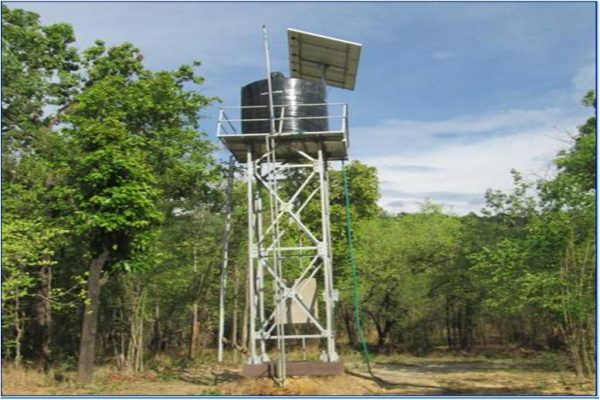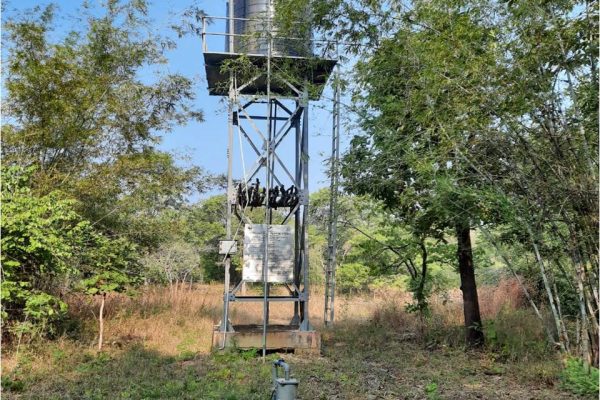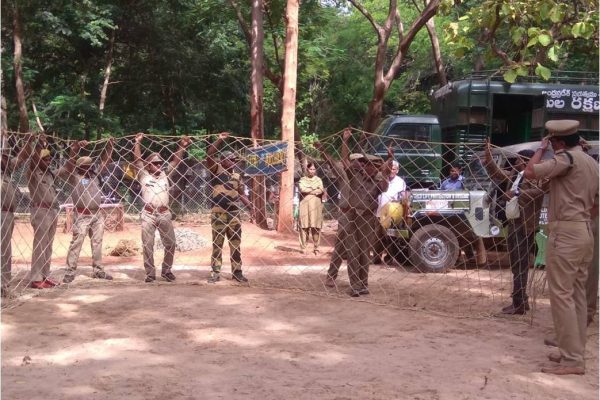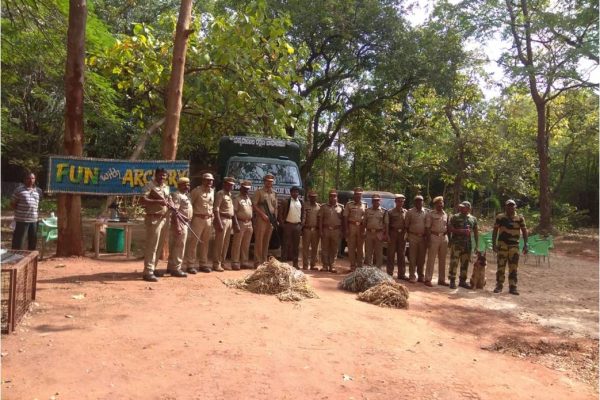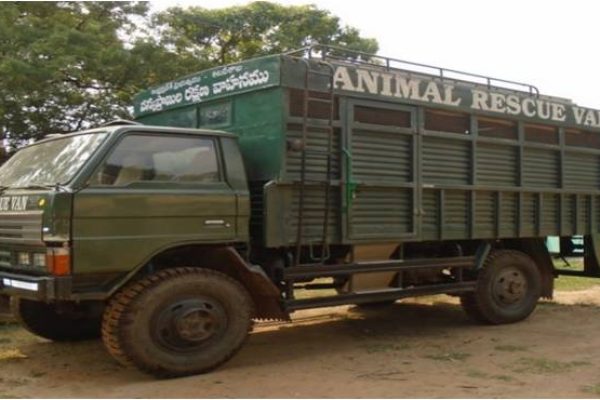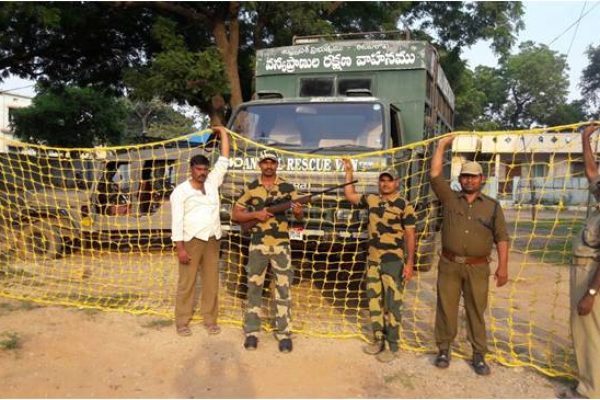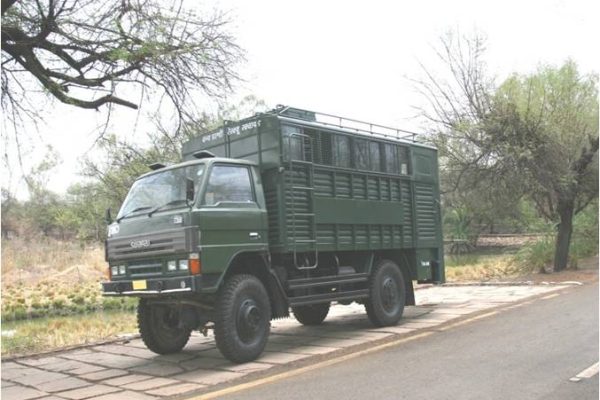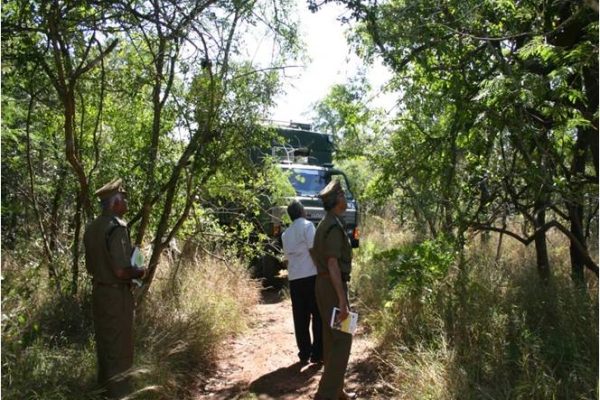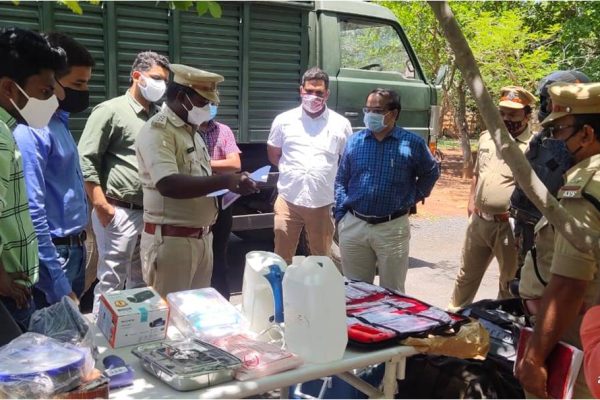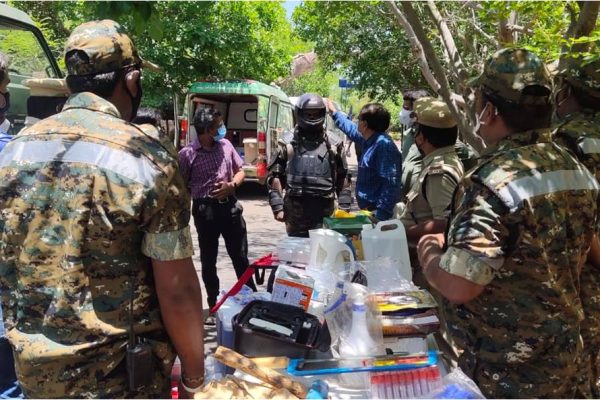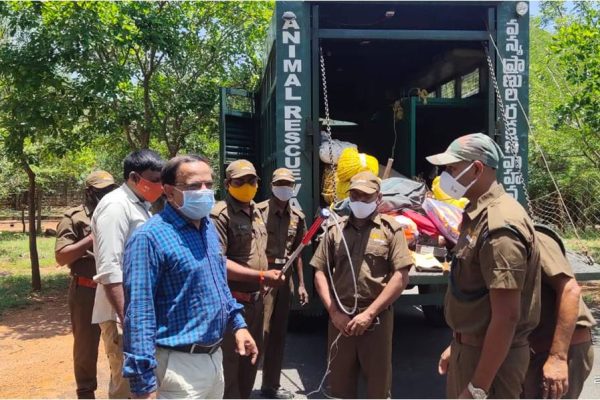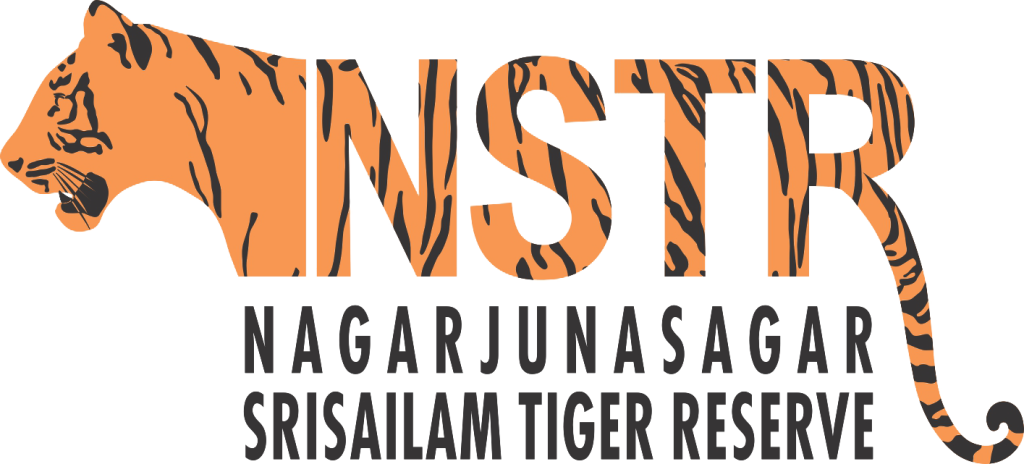Habitat Improvement
Forest Fires
These are caused mainly in summer, either accidentally (by throwing butts of cigarettes, beedis, etc., or by cooking etc.,) or intentionally ( by graziers for new grass, by beedi leaf collectors for new flush or beedi leaf etc).
To prevent forest fires Fire Watchers are engaged, Fire lines are made and control burning is carried out. Whenever fires breakout, they are extinguished by using fire blowers, beating with branches or by pouring water from tankers etc.
Fire Lines
To prevent fires from outside spreading into the Tiger Reserve, and to restrict fire inside the Tiger Reserve, fire lines of 3m width are created . Before the onset of summer ( in the months of December and January), the fire lines are cleared of any vegetation such as dry grass, leaves or twigs.
Thus, there will be an area of about 3m which doesn’t contain any inflammable material and thus fire lines prevent the fires from spreading.

Water Management during Summer
During summer, all the seasonal water sources dry up and only few perennial water sources have water hence there is intense competition between the wild animals and domestic animals for the limited water resource. Often, wild animals stray out of the forest to nearby agriculture fields, villages etc.,in search of water and it is in this process that most Man- Animal conflicts occur.
Many poachers take advantage of this situation and put traps, snares etc., around these water sources.
To overcome the above problem, check dams, percolation tanks etc., are being constructed in the forest area. Saucer pits are constructed inside the Forest as well as in the fringes of forests, and water is filled with tankers to ensure that wild animals do not stray outside forest areas into human habitations
Saucer Pits
For construction of Check dams, Percolation tanks etc., a water source like a stream, rivulet etc., is needed. To provide water sources for wild animals in the fringe areas of forests as well as inside the tiger reserve, where no water source is available, shallow “Saucer Pits” which are lined with concrete are created and they are periodically filled with water by tankers.
The Camera trap photos indicated that the wild animals, both herbivores and carnivores use these saucer pits extensively to quench their thirst during the summer months.




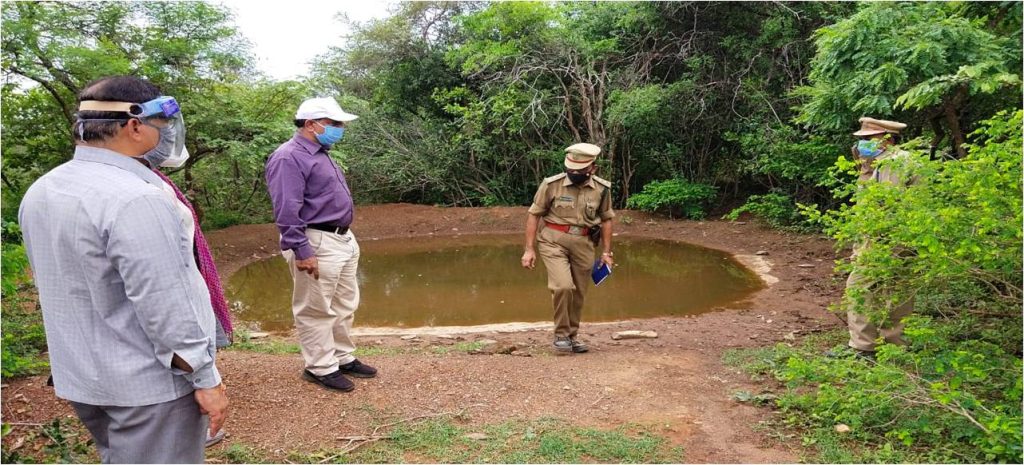



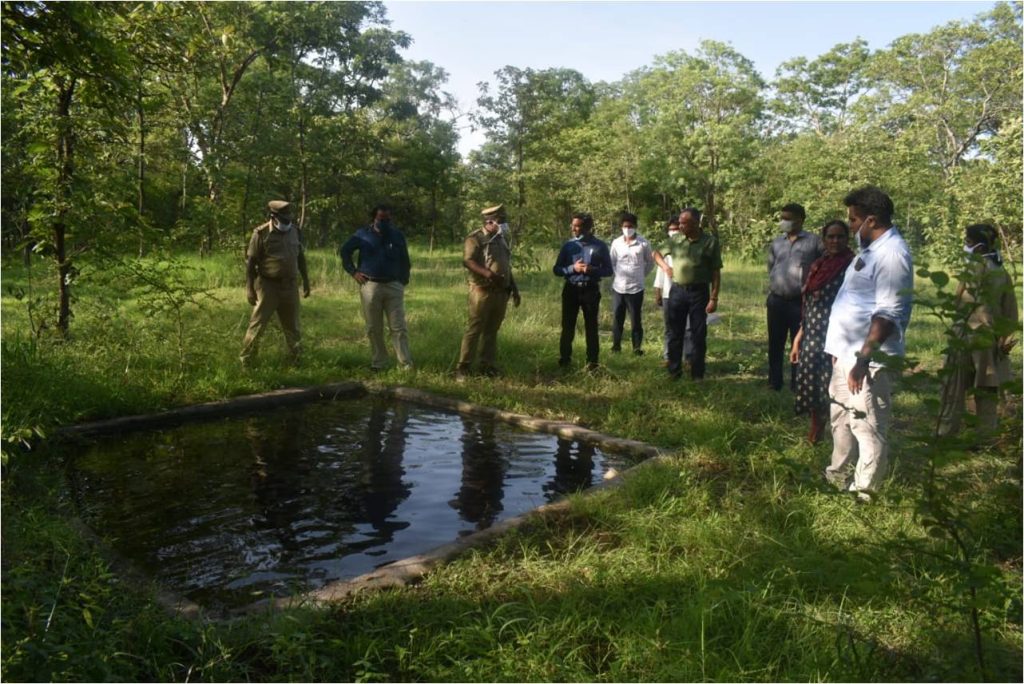




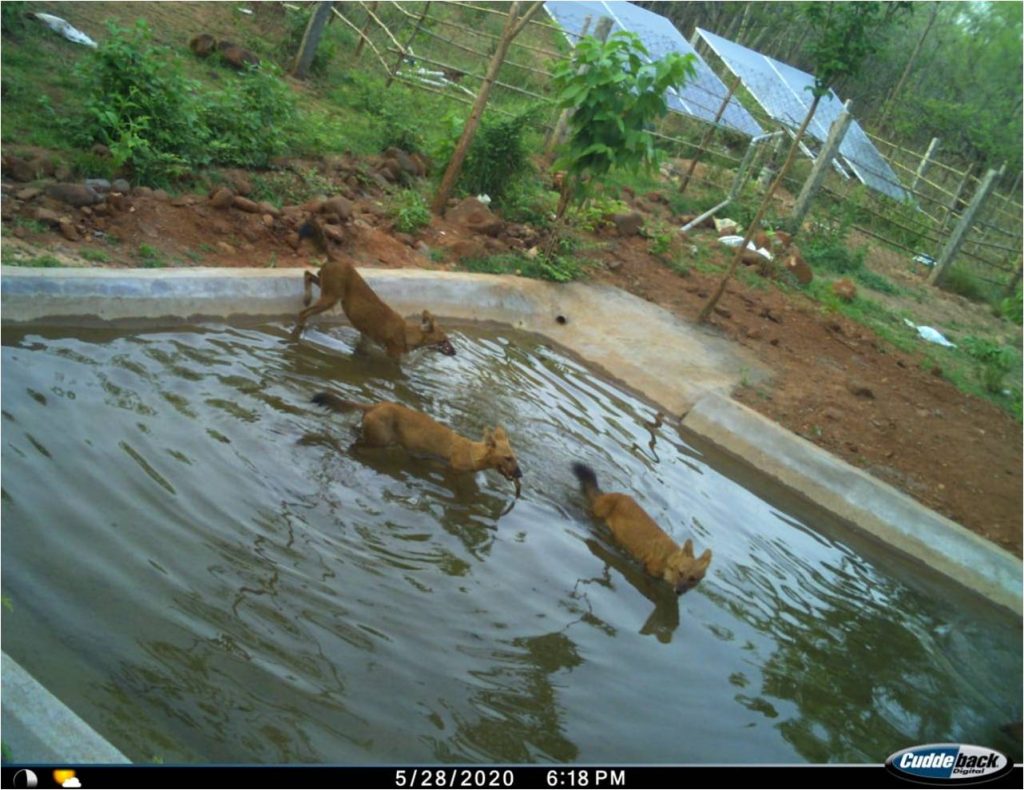
Solar Pump Sets
In the interior forest areas, there is no electricity or availability of diesel to pump water. To overcome this, Andhra Pradesh Forest Department in collaboration with WWF (World Wide Fund for Nature) found a solution by harnessing Solar energy to pump water from open wells, bore wells and direct it into open ponds, subsurface storage units or into the existing tanks which dry up in summer.
This system is working well and there are no maintenance costs. Twenty Six such units have so far been installed in NSTR.
View Lines
The visitors to the Tiger Reserve are often disappointed when they do not sight any wild animals during their visits. To increase the frequency of wild animals sighting, the undergrowth, thorny bush, weeds like Lantana are often cleared to an extent of 20m to 50m on either side of the main roads and jeep tracks inside the forest.
Removal of bushing weeds and shrubbery facilitates the growth of palatable grasses, which consequently attract the herbivores.
This facilitates the sighting of wild animals by the visitors.

Weed Removal
Some of the obnoxious weeds like Lantana, Cassia, etc., invade large tracks of open areas and suppress the growth of natural palatable grasses and other species which form the fodder base for wildlife.
To encourage the growth of natural grasses, these weeds are uprooted periodically and either burnt or uprooted and turned upside down to allow them to decay naturally.
Watch Towers
Watch towers are constructed at good scenic spots for the visitors to enjoy the splendour of nature. They are also constructed in interior forest areas at Vantage points where they are used as fire watch towers, to observe the movement of wild animals as well as to spot poachers.
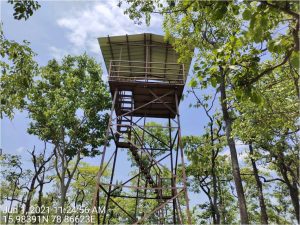
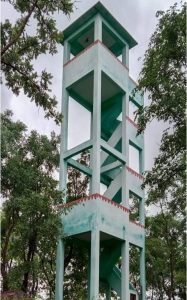
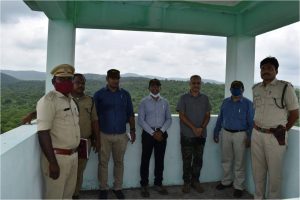
Rescue Operations
NSTR has rescue teams comprising of 2 Vetenery surgeons and 5 personnel who are equipped with facilities like a net, ladder, cage, first aid box, tranquilizing guns and darts etc., for rescuing wild animals which stray into human habitations, or are injured or sick.
After rescuing any animal, they are examined by the Veterinary surgeon who gives first aid and treatment if required before being released into the wild.
If they are seriously injured or sick, they are shifted to the nearest Zoological Park, where good veterinary facilities are available. A highly competent and professional rescue team of NSTR handles all rescue operations.

Swachh NSTR
The Nagarjunasagar Srisailam Tiger Reserve Team manages and conserve the multi-dimensional ecosystem of the Nallamalas using technology and scientific methods.As a result, a considerable area of the catchment of the River Krishna is still intact and sustainable.
However, in recent times, it has been observed that the efforts on the conservation front are challenged by the irresponsible behaviour of pilgrims (floating population). Plastics such as PET (Polyethylene Terephthalate) Bottles, MLP (Multi – Layer Polythene) Covers, LDP (Low –Density Polyethylene) Covers, glass Bottles etc., are being littered on the road / road side while they pass through the reserve. This leads to:-
- Attracting wild animals towards the road leading to frequent road accidents.
- Undesirable Man-Animal Conflict.
- Possibility of the spread of communicable diseases to wild animals.
- Possibility of Bio-Accumulation and subsequent Bio-Magnification of harmful chemicals in the body of wild animals due to accidental consumption of plastic.
- Change in the behavior of the wild animals.
- Affecting the growth of plants in the reserve.
Swachh Sevaks
Because, the conservation of the Nallamala ecosystem is of paramount importance for the Nagarjunasagar Srisailam Tiger Reserve (NSTR) Team, we came up with the concept of employing Plastic Pickers from the local Community to keep the Nallamala environment clean. Collection of discarded plastic is done by, the Plastic pickers (Swachh Sevaks) who are allotted with a certain area each, and it is the responsibility of the plastic pickers to keep the allotted area clean.
To provide quality working conditions, we have offered them Bicycles, Uniforms, Gloves, Shoes, Bags etc.,
